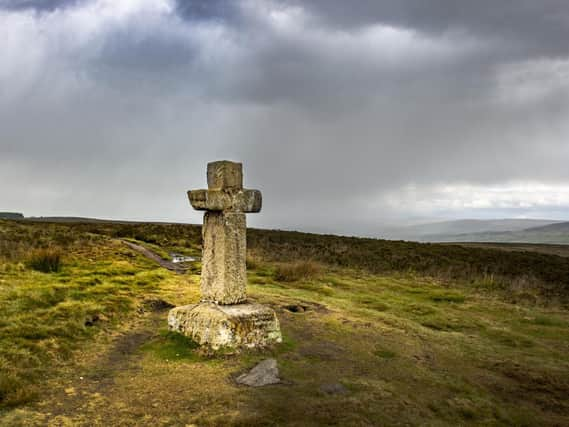This moorland at Ilkley is rich with relics from the prehistoric period


Dating back several centuries, the cross itself is said to have been the site of a medieval trading post and it is thought, by some, to perhaps have been a Christianised monolith.
It sits in moorland between Ilkley and Keighley, an area which is particularly rich with relics from the prehistoric period.
Advertisement
Hide AdAdvertisement
Hide AdPublic heritage body Historic England describes Rombalds Moor, for example - which includes Ilkley Moor - as having numerous rock carvings across its boulders and outcrops, as well as burial monuments, stone circles and a range of enclosed settlements.
When it comes to carved rocks, the Badger Stone is among the most well-known in the area, featuring decorative rings and grooves.
Though little is known about the exact meaning of such designs, across the country they have been interpreted as sacred or religious symbols.
According to the Friends of Ilkley Moor, there are more than 400 known cup and ring style stone carvings on Rombalds Moor, thought to be a form of prehistoric art.
Advertisement
Hide AdAdvertisement
Hide Ad“The stones were carved during the Neolithic-Bronze Age period around 4,000 years ago,” the group says.
Another highlight from the Bronze Age is the moorland’s stone circle known as the Twelve Apostles.
Historic England says such circles had “considerable ritual importance” for the societies that used them.
In some cases, they provided a focus for burials and in other cases, they were thought to have a calendrical function, marking the passage of both time and seasons.
Advertisement
Hide AdAdvertisement
Hide AdThe rolling landscape and prehistoric activity makes the moorland popular year-round with walkers - moody autumn skies or not.
The Friends of Ilkley Moor list a number of heritage routes to try on their website.
Support The Yorkshire Post and become a subscriber today.
Your subscription will help us to continue to bring quality news to the people of Yorkshire. In return, you'll see fewer ads on site, get free access to our app and receive exclusive members-only offers.
So, please - if you can - pay for our work. Just £5 per month is the starting point. If you think that which we are trying to achieve is worth more, you can pay us what you think we are worth. By doing so, you will be investing in something that is becoming increasingly rare. Independent journalism that cares less about right and left and more about right and wrong. Journalism you can trust.
Thank you
James Mitchinson